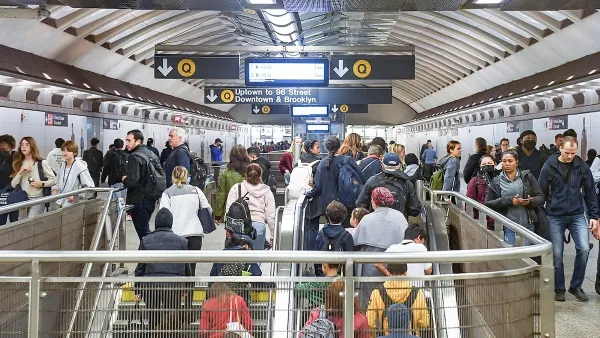A New York Times examination of the conditions of the city’s ubiquitous water tanks reveals unhealthy levels of E. coli and coliform—bellwethers for many varieties of disease-causing microorganisms.
Millions of residents in New York City rely on rooftop tanks to store and disburse water through the city’s high-rises. Surprisingly for such a high visibility figure of the cityscape, however, the water tanks attract very little attention from health inspectors or other regulators, according to the reportage of Ray Rivera, Frank G Runyeon, and Russ Buettner.
To reveal the lurking health risks presented by the city’s water towers, the New York Times took samples from water towers at 12 buildings in Manhattan, Queens and Brooklyn. The samples “found E. coli in five tanks, and coliform in those tanks and three more.”
The city insists that the city’s water storage systems are safe: “City health officials insist that the tanks are safe, and that the laws governing them are adequate,” and “health officials say no cases have ever been traced back to a water tank.”
“The thousands of tanks that dot the skyline are part of a water system that originates at 19 protected lakes and reservoirs in upstate New York…But the vast system of safeguards protecting the water supply virtually ends at the curb. From that point on, it is up to building owners to ensure that their tanks are cleaned, inspected and tested for bacteria annually, as required by the city’s building and health codes.”
However, the city does very little to ensure that building owners are protecting the health of those drinking the water held in their tanks. “The city’s own surveys suggest that nearly 60 percent of the owners do not comply…Building owners are not required to submit proof to the city that cleanings and inspections have been conducted, as they do for elevator and boiler inspections. Until recently, they did not have to provide evidence of the inspections to their tenants.”
FULL STORY: Inside City’s Water Tanks, Layers of Neglect

Planetizen Federal Action Tracker
A weekly monitor of how Trump’s orders and actions are impacting planners and planning in America.

Maui's Vacation Rental Debate Turns Ugly
Verbal attacks, misinformation campaigns and fistfights plague a high-stakes debate to convert thousands of vacation rentals into long-term housing.

Restaurant Patios Were a Pandemic Win — Why Were They so Hard to Keep?
Social distancing requirements and changes in travel patterns prompted cities to pilot new uses for street and sidewalk space. Then it got complicated.

In California Battle of Housing vs. Environment, Housing Just Won
A new state law significantly limits the power of CEQA, an environmental review law that served as a powerful tool for blocking new development.

Boulder Eliminates Parking Minimums Citywide
Officials estimate the cost of building a single underground parking space at up to $100,000.

Orange County, Florida Adopts Largest US “Sprawl Repair” Code
The ‘Orange Code’ seeks to rectify decades of sprawl-inducing, car-oriented development.
Urban Design for Planners 1: Software Tools
This six-course series explores essential urban design concepts using open source software and equips planners with the tools they need to participate fully in the urban design process.
Planning for Universal Design
Learn the tools for implementing Universal Design in planning regulations.
Heyer Gruel & Associates PA
JM Goldson LLC
Custer County Colorado
City of Camden Redevelopment Agency
City of Astoria
Transportation Research & Education Center (TREC) at Portland State University
Jefferson Parish Government
Camden Redevelopment Agency
City of Claremont





























